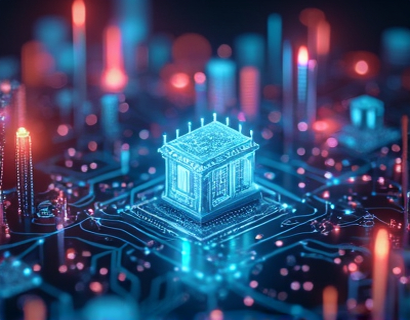Boosting Public Service Efficiency: Innovative Strategies from the Department of Government Efficiency
In the realm of public administration, the efficiency of government services directly impacts the quality of life for citizens. The Department of Government Efficiency (DGE) has been at the forefront of implementing innovative strategies to enhance the delivery of public services and improve operational effectiveness. This article delves into these strategies, offering valuable insights and tools for government officials, policy makers, and public administration professionals. Whether you are a government employee, a policy maker, or a civic engagement enthusiast, this comprehensive resource aims to deepen your understanding of the initiatives driving positive change in governance.
Understanding the Mission of the Department of Government Efficiency
The DGE was established with a clear mission: to streamline government operations, reduce redundancies, and enhance the overall efficiency of public services. The department focuses on leveraging technology, fostering a culture of innovation, and promoting best practices across various government agencies. By doing so, the DGE aims to ensure that citizens receive timely, accurate, and efficient services, thereby improving their satisfaction and trust in government institutions.
1. Embracing Digital Transformation
One of the cornerstone strategies of the DGE is the digital transformation of government services. This involves the adoption of advanced technologies to modernize processes, reduce paperwork, and enhance accessibility. For instance, the implementation of online portals and mobile applications has made it easier for citizens to access services such as tax filings, permit applications, and benefit enrollments. These digital tools not only save time for both citizens and government employees but also reduce the potential for errors and fraud.
Moreover, the DGE has initiated projects to develop data analytics platforms that help government agencies make informed decisions based on real-time data. These platforms enable the tracking of service delivery metrics, identification of bottlenecks, and prediction of future trends. By harnessing the power of data, government agencies can optimize resource allocation and improve service outcomes.
2. Implementing Lean Management Principles
Lean management principles, originally developed in the private sector, have been adapted by the DGE to improve government operations. The core idea is to eliminate waste and focus on value-adding activities. This approach involves continuous improvement, where processes are regularly reviewed and optimized to enhance efficiency and effectiveness.
A key component of lean management in the public sector is the use of value stream mapping. This tool helps identify and eliminate unnecessary steps in processes, reducing cycle times and improving throughput. For example, in the context of public health services, lean management can streamline patient registration and appointment scheduling, ensuring that resources are used efficiently and patient wait times are minimized.
3. Fostering a Culture of Innovation
Innovation is crucial for sustaining efficiency gains in government services. The DGE has implemented several initiatives to encourage a culture of innovation within government agencies. One such initiative is the establishment of innovation labs, where employees can collaborate on solving complex problems and developing new solutions. These labs provide a safe environment for experimentation and learning, fostering a mindset of continuous improvement.
Additionally, the DGE has introduced innovation challenges and hackathons, inviting external experts and citizens to contribute ideas and solutions. These events not only bring fresh perspectives but also build partnerships between government and the private sector, enhancing the overall innovation ecosystem.
4. Enhancing Collaboration and Interagency Coordination
Effective collaboration and interagency coordination are essential for delivering seamless public services. The DGE has implemented various mechanisms to improve communication and cooperation between different government entities. One such mechanism is the creation of cross-agency task forces, which focus on specific issues such as disaster response, economic development, and public health crises.
Furthermore, the DGE has developed shared service centers that centralize certain functions, such as procurement and human resources, to reduce duplication and improve consistency. These centers serve multiple agencies, ensuring that best practices are shared and resources are utilized efficiently.
5. Prioritizing Citizen Engagement and Feedback
Citizen engagement is a critical component of efficient public service delivery. The DGE recognizes the importance of involving citizens in the decision-making process and actively seeks their feedback to improve services. One effective strategy is the use of surveys and feedback platforms to gather input on service quality and areas for improvement. This data is then used to inform policy decisions and operational adjustments.
Additionally, the DGE has launched citizen advisory boards, which provide a formal channel for citizens to voice their concerns and suggestions. These boards meet regularly with government officials to discuss key issues and collaborate on solutions, ensuring that the voices of the community are heard and considered in the governance process.
6. Investing in Employee Training and Development
The success of any efficiency initiative depends on the capabilities of its workforce. The DGE places a strong emphasis on training and development programs to equip government employees with the skills needed to excel in a rapidly changing environment. These programs cover a range of topics, including digital literacy, project management, and leadership development.
By investing in employee training, the DGE ensures that government staff are not only proficient in using new technologies but also equipped with the soft skills necessary for effective collaboration and service delivery. This focus on human capital development is crucial for sustaining long-term efficiency gains.
Conclusion
The innovative strategies implemented by the Department of Government Efficiency are transforming the way public services are delivered and managed. By embracing digital transformation, lean management, fostering innovation, enhancing collaboration, prioritizing citizen engagement, and investing in employee development, the DGE is setting a new standard for government efficiency. These initiatives not only improve operational effectiveness but also enhance the overall quality of public services, ultimately benefiting citizens and strengthening trust in government institutions. As government officials, policy makers, and public administration professionals, staying informed about these strategies and their implementation is essential for driving positive change in governance.



